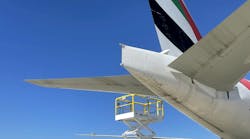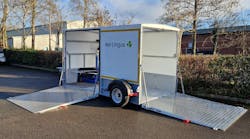I remember back in the good old days when it was possible to fix almost everything on an aircraft with a set of hand tools and a multi-meter. Boy, have things changed!
Aircraft currently rolling off the assembly line from the Airbus 380 to the Cessna 162 utilizes digital technology. Many include self-diagnostics allowing storage and recall of flight faults and in some cases providing the ability for technicians to conduct an onboard system analysis to determine airworthiness.
Recently, I had the opportunity to receive instruction on a new piece of test equipment intended to assist in the adjustment of helicopter rotor systems. I still have a vague recollection of the first time I was involved in tracking helicopter blades. The tools of choice consisted of a long vertical pole with a piece of cardboard attached. Colored chalk was taped to the tip of each rotor blade and then the engine was run at a specific speed. As the chalk passed the cardboard a visible reference line was drawn. The engine was shut down, adjustments made per tribal knowledge, and the process began again. Eventually the two colored lines converged enough to declare that the two blades were flying together. The chief mechanic was the final authority regarding satisfactory vibration levels. The decision was based on SOP (Seat Of Pants) technology.
The new equipment consisted of accelerometers to monitor the vibrations, a photo-optical device to determine blade position and a data analyzer. Once connected to the helicopter, a run was accomplished, and an analysis completed. Shortly recommendations to improve the situation were displayed. Adjustments were then made and recorded in the device. Another run followed and further recommendations for improvements were computed. The analyzer actually learned from the results of the last run and used this knowledge as part of the formula to compute further remedial action. The process was accomplished within a few hours as compared to a day and a half using the older equipment. When the helicopter next flew, the pilot commented that the ride was the smoothest ever.
In our business, hand tools and manual dexterity will be required at least for the foreseeable future but the ability to function in the digital age will separate the true technicians from the panel removers and parts changers. Tools of today have taken on a new appearance and are less dependent on bodily coordination and more focused on the user’s ability to think.
The one tool possessed by all aircraft technicians is the mind; and, enhancements come with acquired knowledge which (to date anyway) cannot be purchased from the back of a Snap-on truck.
The mind, like most tools, requires frequent use to achieve proficiency and some technicians tend to utilize it more than others.




